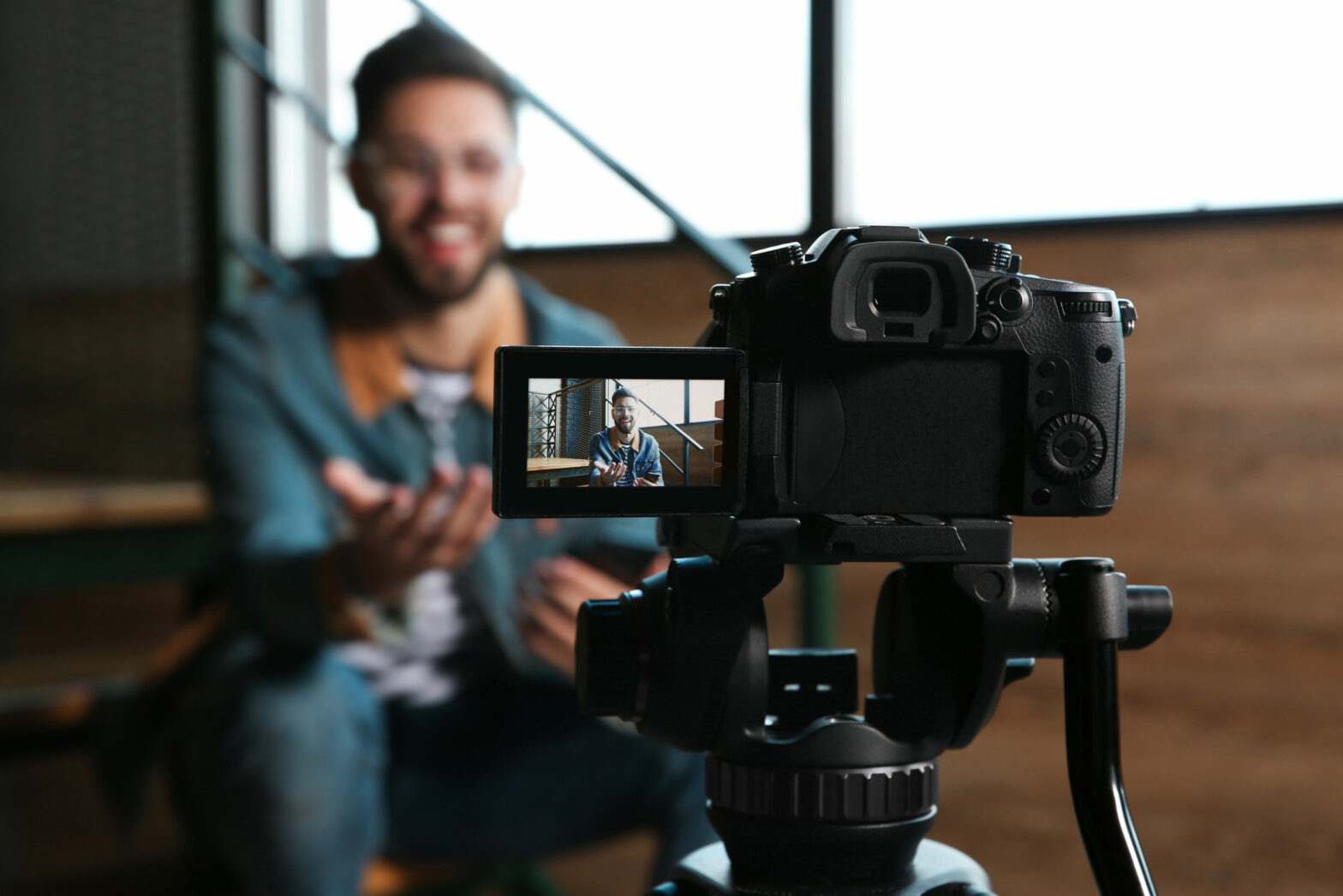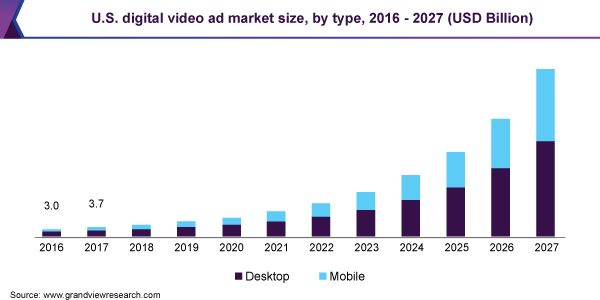Video ads are an amazingly powerful marketing medium. It attracts attention, stops people in their endless scroll, and sticks in the memory to convey messages and information in appealing and easily digestible ways.
It’s perfect for digital natives who want their content to be entertaining and effortless to consume, so it’s no real surprise that the global video ads market is growing at a rate of knots. It rose from $3bn in 2016 to $19.7bn in 2019, and it’s estimated to continue at a CAGR of 41.1 per cent year on year until 2027.
Even during the height of the Covid-19 pandemic, when marketers scaled back on many channels, global video advertising revenues remained stable, probably because people stuck at home were seeking entertainment. It’s striking that video ads are considered as part of the entertainment category.
Video ads have expanded to new platforms like social media ads, in-app video ads, and OTT streaming media ads, and evolved new styles like 360-degree video and vertical filming which make them even more eye-catching and immersive. It’s impossible — and unwise — for SMEs to overlook them, especially when you’re swimming in the same ocean as large, corporate competitors.
But generating effective video ads is also a serious challenge for small businesses. Many companies skip them entirely, assuming that it’s going to require more time and effort than they can spare to create compelling video ad content. However, with the right tricks and tools it’s even possible for bootstrapped teams to generate top video content on a shoestring that looks like it involved a huge budget.
Here’s how to pull it off.
>See also: 5 tips to make your small business TikTok marketing a success
Turn photos into videos
Apps like Boosted go a long way to making the process shorter and easier for SMEs. When you use Boosted, you can turn photos and still imagery which you already have on hand into professional-quality videos within just a few minutes. It’s available for web, iOS and Android.
Boosted makes the editing process easy and fast, serving as a shortcut to creative and original video content, without compromising on quality. Just choose a clip and music from their libraries, add your copy and visual elements, adjust the music and color scheme, and you’re good to go.
The built-in templates and resizing tools mean that you can prepare video content for paid ads on any platform without spending time fiddling around adjusting ratios and crops.
Repurpose evergreen text content
If you want your video ad to turn heads, you need to invest in the script. You’ll often need to devote more energy to planning your storyline, tone, and style than to actually shooting and editing the video.
But to keep things scalable, you need to make sure not to fall into the trap of trying to reinvent the wheel every time you create a new ad.
That’s why it helps to repurpose evergreen content for your video ads. You already know which topics are the most popular and what tone your audience appreciates, and you’ve done all the research. You just need to convert it from text to video. Your most popular blog posts, podcasts or social media posts can all serve as the skeleton script for your new video ads.
>See also: How to use Snapchat to sell your products to Gen Z
Focus on the elements that really matter
When allocating spending for video ads, pick and choose the elements that really matter and are justified by video ad traction. It’s a common misconception good video requires a premium camera, but advanced built-in phone cameras mean you’ll often be able to shoot “good-enough” video on your smartphone.
However, the more you scrimp on equipment, the more you might have to spend further down the line to improve video and sound quality. You can cut some corners more safely than others.
For example, a tripod is non-negotiable. Phone cameras tend to be weak in the mic department, so it’s worth getting a separate microphone. Finally, ring lights have become shockingly popular for videographers during the pandemic, thanks to their sharp, clear, and flattering lighting.
Keep it short
Today’s consumers have a short attention span, and ephemeral content like Snapchat and Instagram Stories educated them to get antsy after even a few seconds.
Over the past few years, 30 seconds became the clear favourite video length. By Q3 2020, 79 per cent of video ads were 30 seconds long, up from 55 per cent in Q3 2018. Pre-roll YouTube ads are skippable after just six seconds, mind you.
This means that not only is there no need to invest in planning and recording long video ads, but it would actively harm your ROI.
You really can just shoot one minute of content, edit it with an app, and post it to social media.
You could also shoot a longer video, and then carve it up into multiple short ads to make the most of your time and effort. It’s an excellent tactic for creating a series of consistent video ads.
Put your video content to work
Once you’ve created video content of any kind, look for ways that you can make the most of your investment. For example, if you’ve created Facebook Live video or recorded a webinar, you could edit a section into a video ad.
There are a number of low-cost video editing tools that make it easy to add custom intros, overlays, and outros that you need to finish off turning a clip from a longer video into a short video ad.
Camtasia, Filmora and Screencast-o-matic are all excellent budget video editor options.
Don’t let the video ad revolution pass your SME by
There’s no reason for small business owners to miss out on the power of video ads, just because you have a small team and/or a tight budget. By repurposing text into video and reusing existing video content, focusing on short video ads, and using the right editing apps and video equipment, your SME can compete on video ads with the big corporations and enjoy the elevated RoI.
Myra Sugg is an ad media sales consultant based in Scottsdale, Arizona. You can reach her via Twitter or LinkedIn









